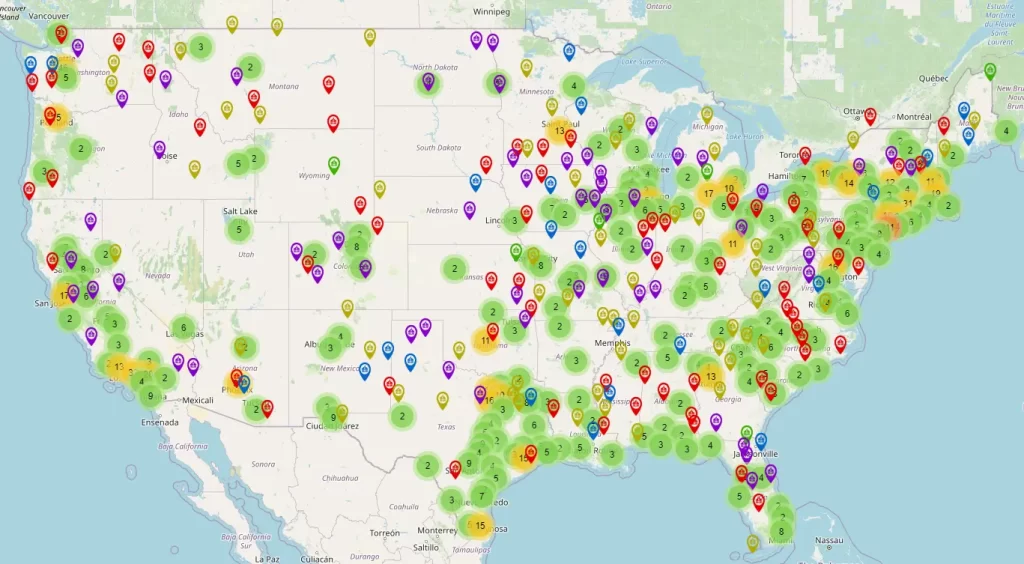CAN YOUR SCHOOL SURVIVE
BEING HACKED?
More often than not, the confidence in our education system’s approach to security is directly related to how much time and money is dumped into the security fund, while the truth about what is actually going on is never really known.
At a basic level, we understand that resources are scarce when it comes to education. Most of the bigger initiatives include new purchases such as computers, tablets, or better connectivity.
In the beginning, there is never a ton of data on these devices- therefore, it has never been made a “big deal.”
As more programs become incorporated, secured information are dropped into those programs, and more tests are being loaded on these devices,
More programs become incorporated, secured information is dropped into these programs, and teachers begin to load tests on these devices. Before you know it, masses of information are being used and transferred across these devices with minimal protection, because in the beginning, “they were just going to be used for…”
Sound familiar? We thought so.
Security Systems for Schools Should Be A Priority
We are well aware that investing in a security system doesn’t support the photo opportunities quite like passing out a shiny new laptop or tablet to a host of students.
For the most part, digital security stays at the bottom of the “to-do” list in most education systems. The job of ‘security’ is added to the list of responsibilities that nobody wants, and given to the few unlucky staff members who are likely overworked.
Digital security concerns tend to be an afterthought for most schools, a reactive measure. Typically, only two things drive a school to look into security systems:
- A move to an online platform, especially for testing.
- When something of importance is ‘hacked.’
What Does Being Hacked Mean for School Systems?
- Data or Intellectual Property is Stolen-- personal information about teachers, students, or administrators
- Integrity of Data is Called Into Question-- the ability for students to cheat on a test, or the ability to change grades after the test
- Online Testing, or Access to a Web Site/Database is Disrupted
For most education systems, with respect to being hacked, it isn’t a question of “if.” It is a question of when and to what extent?
Do you have a gameplan for when it happens?

Actually, there’s a strong possibility that your school has already been hacked, more than once. According to K-12 Cybersecurity Resource Center, there have been 1,619 reported incidents since January 2016, however, the outcomes are not always the same. Maybe the hack made local headlines, or it was handled “in house.” Maybe it was caught & blamed on outside vendors, or even worse, maybe you didn’t even know it happened.
Maybe you still don’t know it’s happening.
Although we’ve seen our fair share of threats or file attacks, the first step in prevention is identification. Identify that there’s either a problem, or the potential of this problem, to take place.
What’s your plan of action after your school is hacked? Do you have one?
By implementing a set of concrete actions for a potential scenario, you could end up saving loads of grief, damage, downtime, loss of trust, and more.
Dedicated Safety System
Technologies change while the bad guys become increasingly better at what they do. Does your school have the time, energy, or resources to keep up with hacking processes that are continuously updated, all while educating our future? We didn’t think so.
Cybercriminals are experts at finding the weakest link within your network. Reported data breaches for businesses are at an all-time high. Schools need to have an incident response team in place- not a board member who has been given the task, along with five thousand other random checklists of things no one else wants to handle. An actual dedicated security team. This means you will need to hire outside of your organization in order to get dedicated experts.
What will a dedicated security system do for my school?
Investigate the Cyber Attack

Isn't it time to protect our future?
From consultation and design, to installation and maintenance, we integrate our products to provide convienient, quality security solutions that allow for future growth and expandability. Whether you’re starting from scratch or updating an existing system, get started with Homeland Safety Systems today for all of your security needs.
